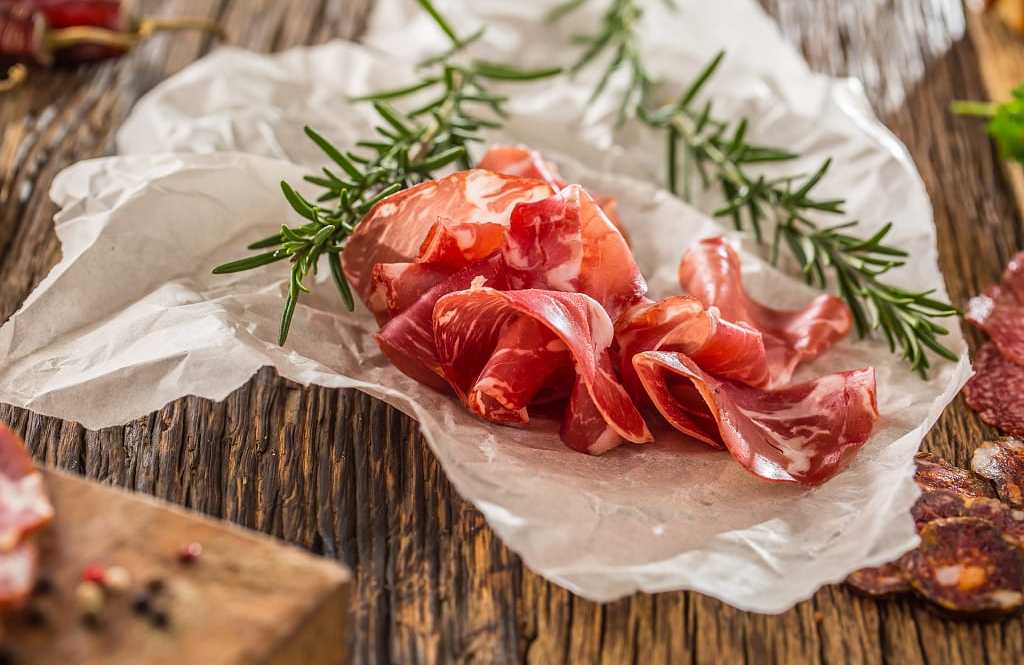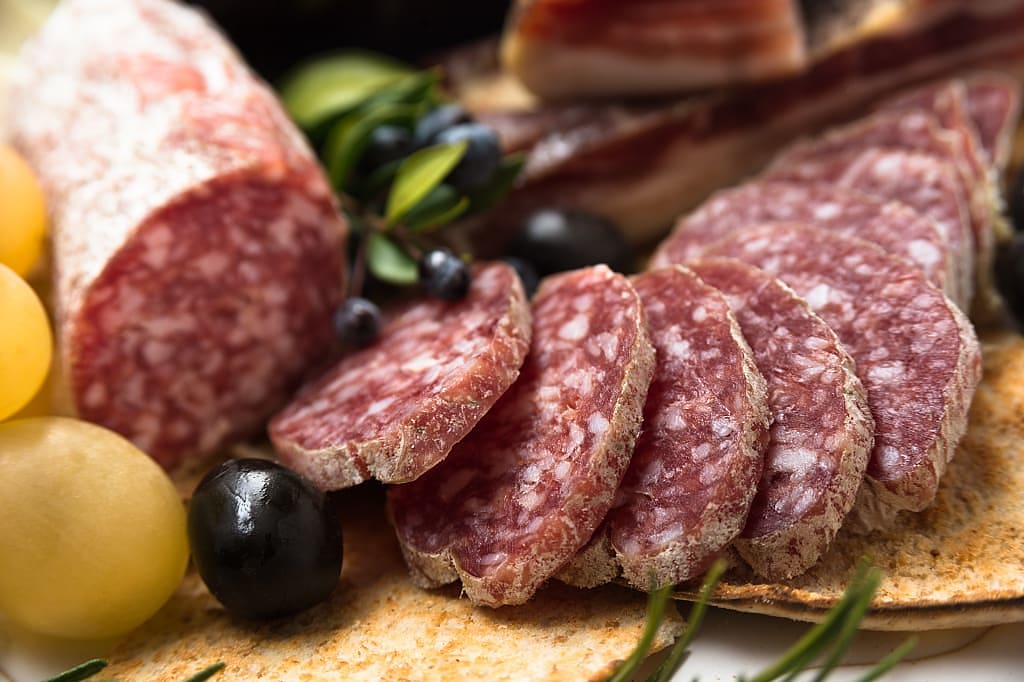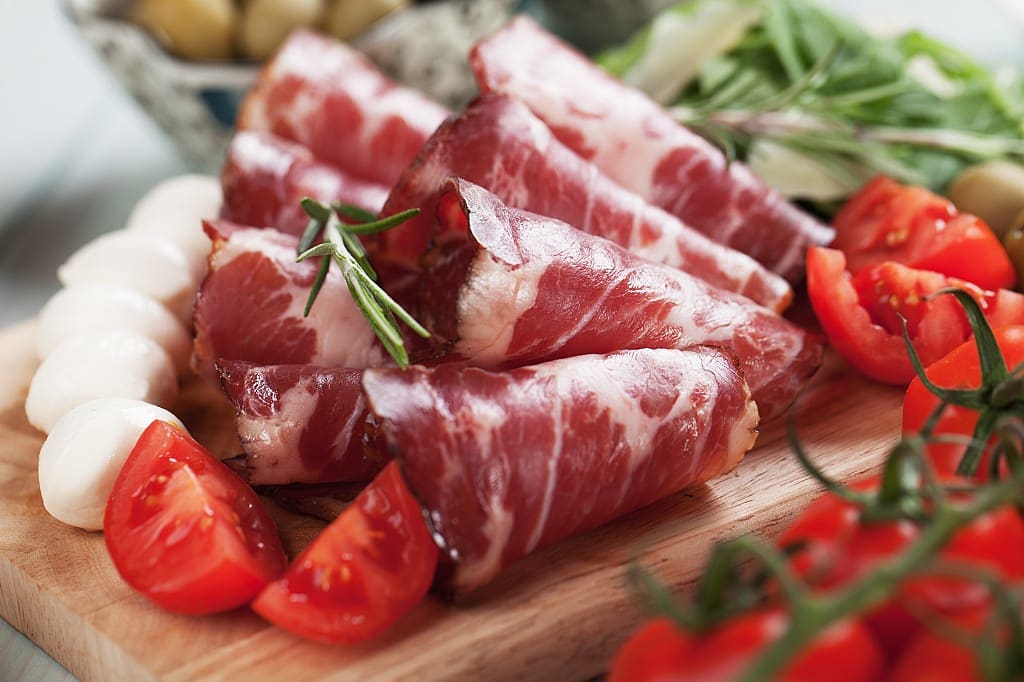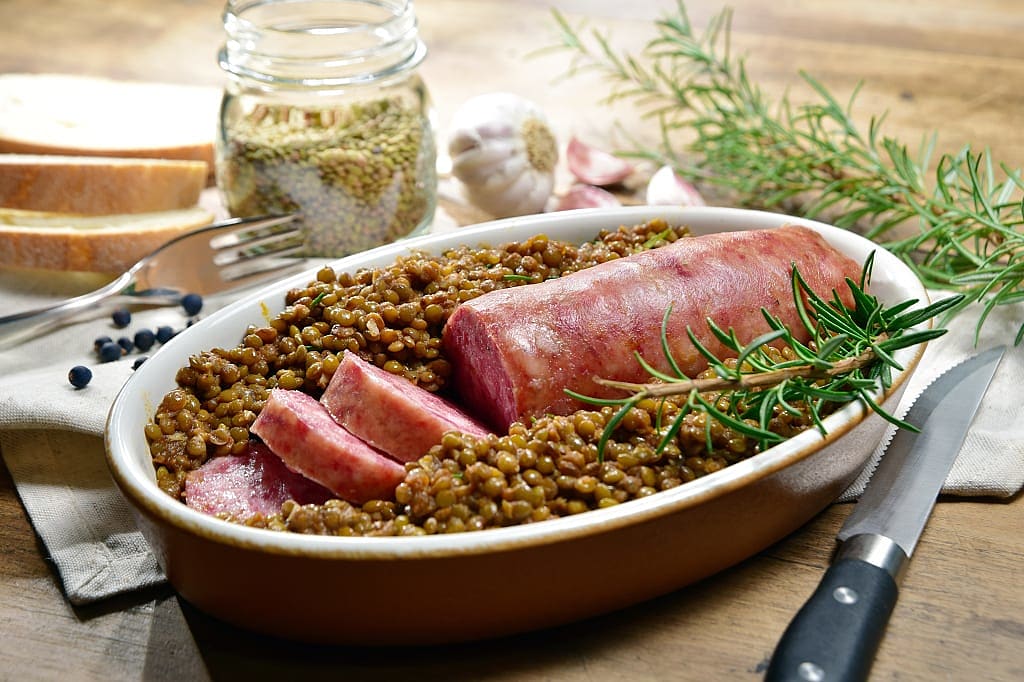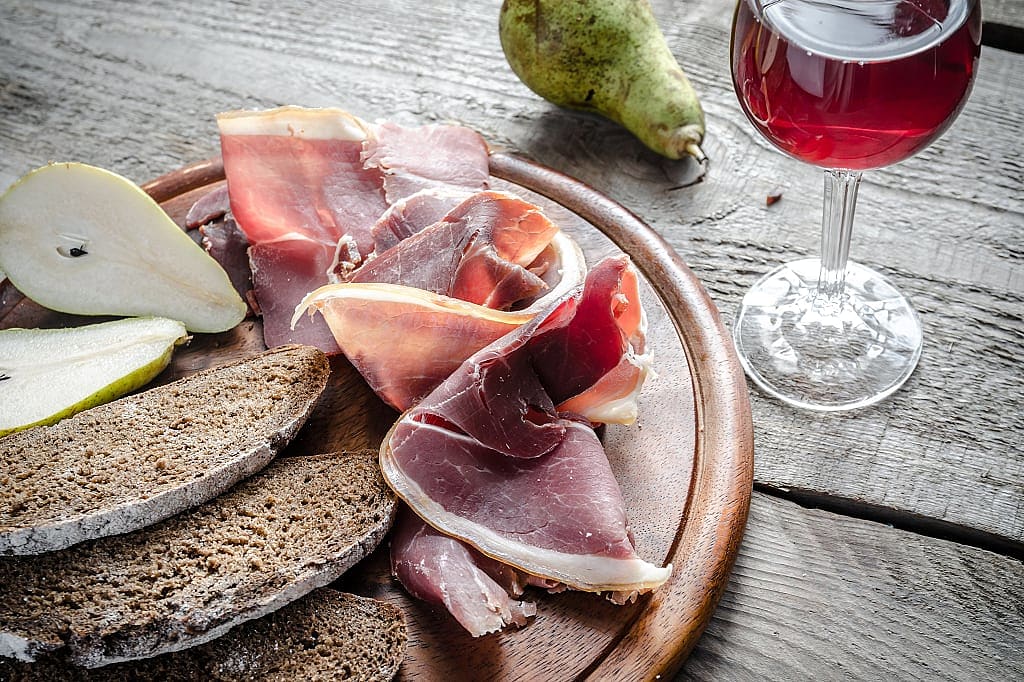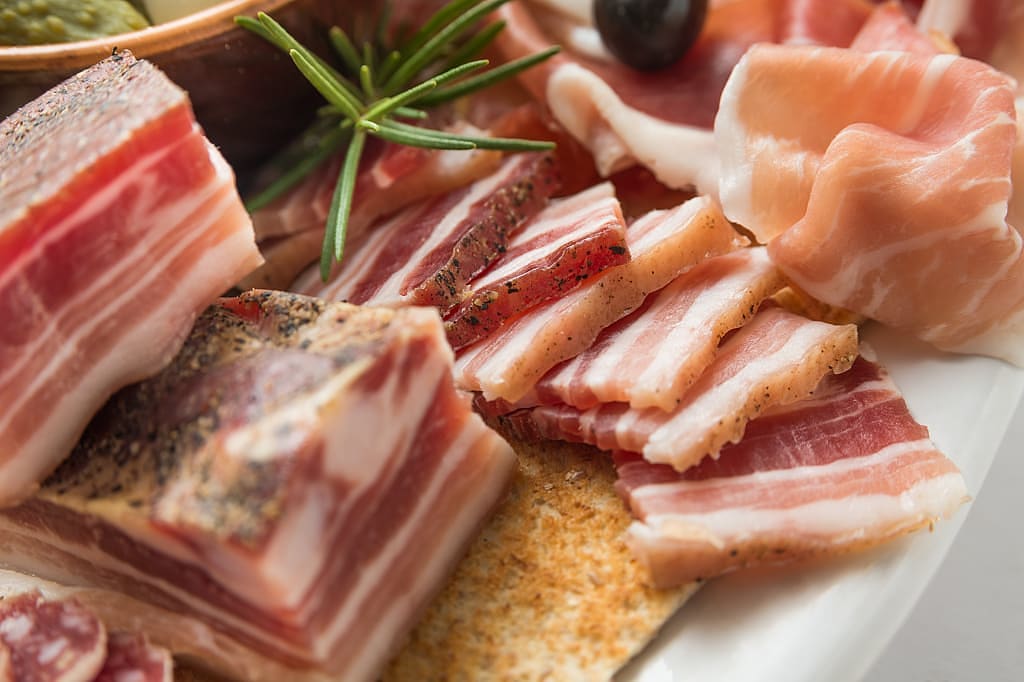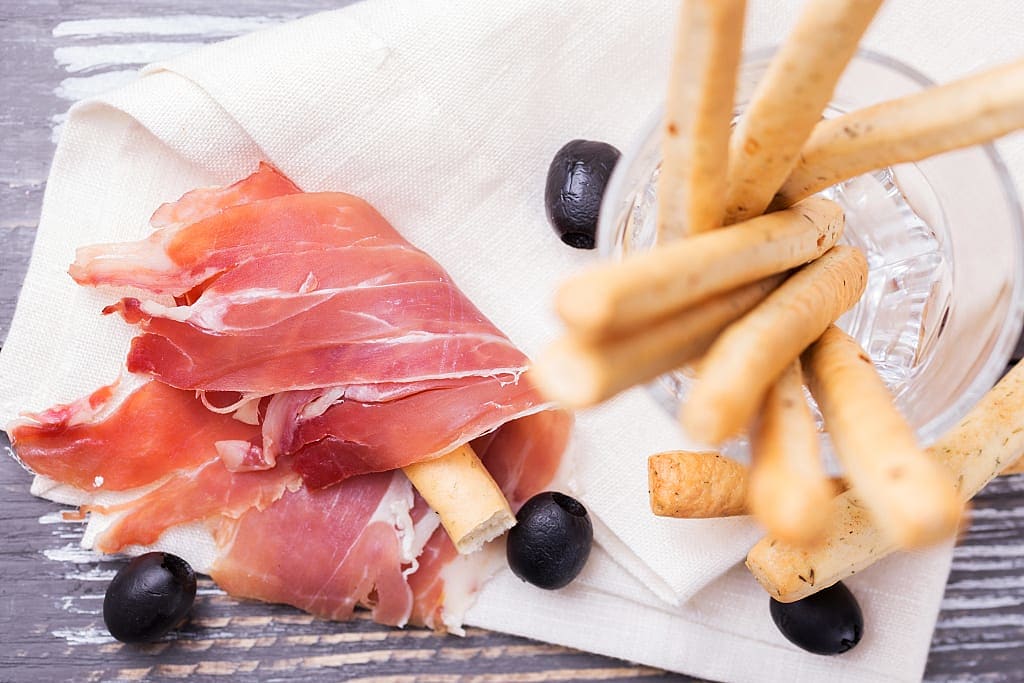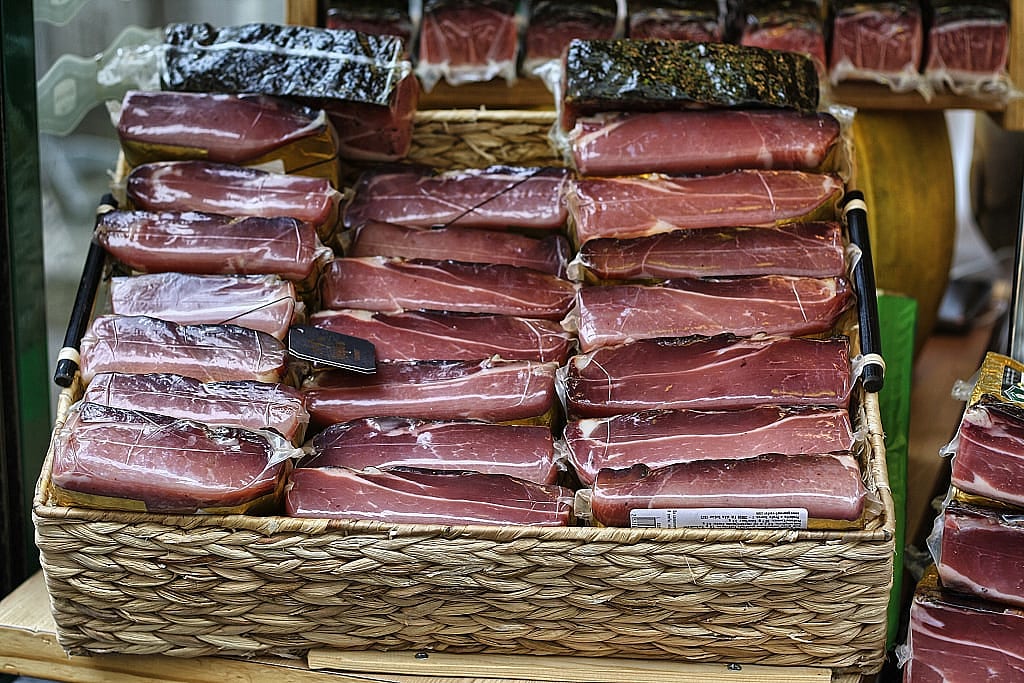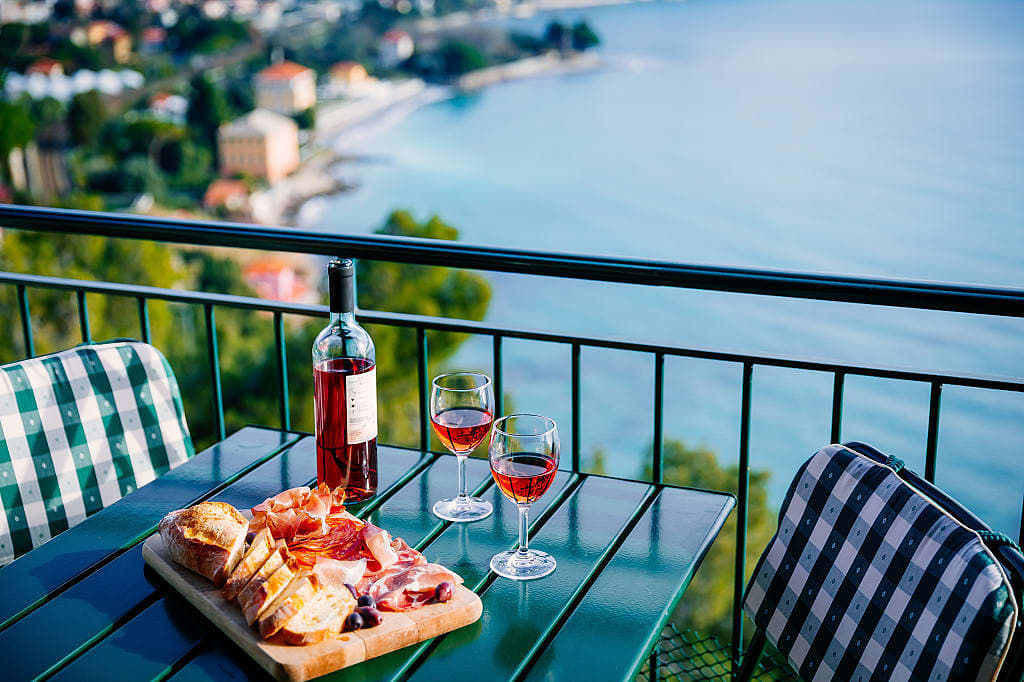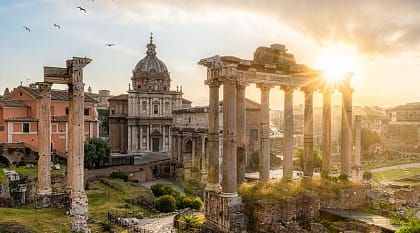Bresaola is a salted, slightly aged beef dried in a room heated by a wooden fire. The cured meat is lean and reminiscent of pastrami, but thinner. It is often served as an antipasto on its own and is similar to carpaccio, with thin slices covering the plate. Chefs or cooks typically add shaved Parmigiano-Reggiano for extra flavor. More upscale dishes add shaved white truffles or sliced, marinated mushrooms.
As you travel through Lombardy’s Valtellina area on northern Italy tours and vacations, you will come across Bresaola branded with an Indicazione Geografica Protetta (IGP) label that signifies its authenticity to the region.
